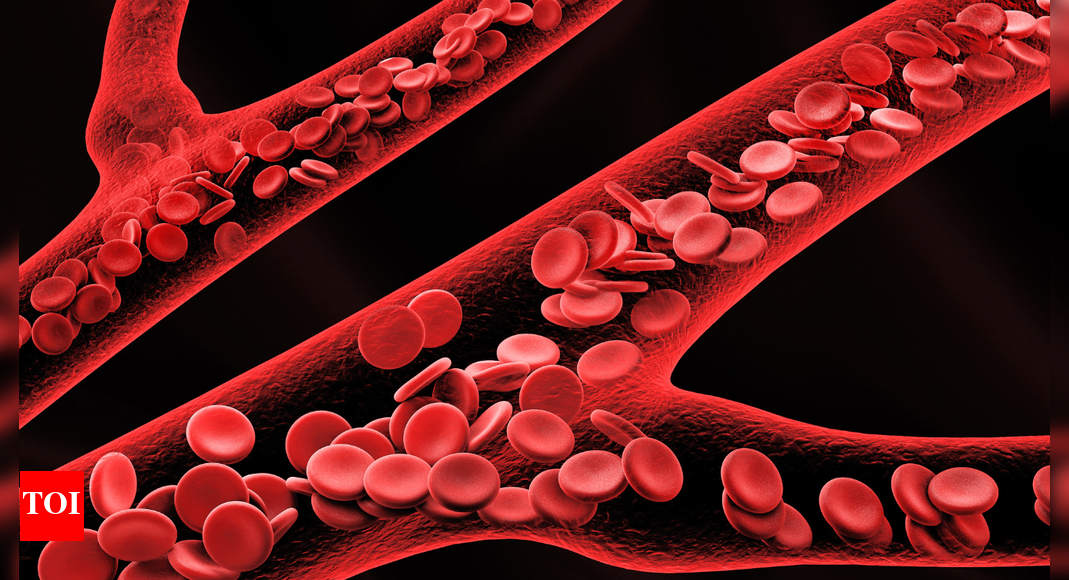My personal style signifier is sports- and swimwear – particularly my Youswim two-piece sets. I live in them; I have them in every single colour. It’s like Hunza G [in crinkle-stretch fabric] but I find the Youswim ones more elasticated….
Blog
-

Saudi Arabia in talks with US for defence pact
Unlock the White House Watch newsletter for free
Your guide to what Trump’s second term means for Washington, business and the world
Saudi Arabia is discussing a defence deal with the Trump administration similar to a US-Qatar pact last month…
Continue Reading
-

Swiss court ruling has left a big unknown over Credit Suisse AT1 saga
Unlock the Editor’s Digest for free
Roula Khalaf, Editor of the FT, selects her favourite stories in this weekly newsletter.
The writer is a managing partner and head of research at Axiom Alternative Investments
The AT1 bond market does not have many friends. When Swiss authorities controversially wiped out $17bn of the Additional Tier 1 bonds issued by Credit Suisse, many claimed that the market was dead. As the argument went: “Surely no one would be foolish enough to read the terms and conditions and still buy bonds that can be worth zero overnight?”
Lots of people were, it turned out: since lows hit in the wake of the failure of Credit Suisse, a Bloomberg index of the price of the bonds is up 50 per cent. And 2024 still saw a near 60 per cent increase in issuance to €46bn, according to Barclays. This year issuance has reached €34bn.
AT1s were introduced as a form of supplementary bank capital, designed to be wiped out in a crisis to cover losses. They are crucial to reduce banks cost of equity and increase their capacity to lend. The issue with the Credit Suisse AT1s is whether the bonds were wiped out fairly. The Swiss Federal Court ruled on Tuesday that the treatment of the bonds was unlawful — a decision my investment firm supports as we own some bonds affected and are taking separate legal action. Now we are hearing a similar argument to the one made at the time of the Credit Suisse failure, only in reverse: if you cannot wipe out AT1 capital when an entity is a “gone concern”, the asset class is dead.
But the circumstances of the Credit Suisse saga are idiosyncratic. To simplify, Swiss regulator Finma argued that it had basically three grounds to wipe out the bonds: two contractual grounds based on the terms of the bonds, and one general legal right, as an authority overseeing the bank’s resolution. The court dismissed the contractual grounds with a reasoning that is strictly limited to the specifics of this case. The terms and conditions allowed the wipeout in two situations: i) a notification by Finma of the non-viability of the bank and request by it for the wipeout of both AT1 and Tier 2 bonds or ii) necessary state aid improving the capital of the bank. On the first point, the court noted that Finma issued no such notification and, incomprehensibly, did not wipe out Tier 2 bonds. It could have done so. On the second point, the court says that Credit Suisse only received liquidity, and liquidity does not improve capital.
The last nail in the coffin? Finma argued that, as AT1 eligible bonds, the terms were maybe unclear but should have allowed the wipeout. The court answered that Finma should not have authorised the bonds if they did not meet AT1 requirements.
The discussion on the “general legal right” is also very intriguing. There were many ways for the Swiss authorities to zero the bonds. Swiss banking law gives huge discretion to Finma as a resolution authority and the court points that it explicitly refused to declare a resolution event and wipe out the bonds, presumably to protect the shareholders who received $3.2bn from UBS in the takeover of Credit Suisse and would have been left with nothing in a resolution. Under the Swiss constitution, an infringement on property rights requires a law and emergency ordinances can only be used as a substitute if no law is readily available.
None of this has direct implications for the rest of Europe. European authorities have already proved that swift and strict application of resolution laws can be done with little litigation risk. Sberbank Europe was wound down in 2022 and even the fall of Banco Popular in 2017 did not leave many pathways for AT1 bondholders to pursue redress in court.
Where does this leave UBS? Our firm has an interest in the outcome as we own UBS bonds but hold short positions on the stock. It’s the big unknown, and the Swiss court was very careful to point out that it was not answering that question — yet. This is why it calls its own decision “partial”. But the full text of the ruling hints at three possibilities.
Ruling that the ordinance wiping out the bonds is null could simply mean that the bonds are reinstated and reintroduced in UBS’s balance sheet. Whether UBS could receive indemnification from the Swiss government, in the middle of the current tense discussion on massive new capital requirements for the bank is another story. But the court could also rule that the AT1s remain void and that its decision only opens the right to seek indemnification from Finma or from the now combined Credit Suisse-UBS.
Who pays what in that scenario remains highly speculative — not to mention that this complex decision is not final and Finma will appealed against it. The Credit Suisse AT1 saga is far from over.
Continue Reading
-

Silicon Valley takes stock of the AI bubble – Financial Times
- Silicon Valley takes stock of the AI bubble Financial Times
- Stocks may be in an AI bubble. Is it time to horde cash? USA Today
- ‘Absolutely’ a market bubble: Wall Street sounds the alarm on AI-driven boom as investors go all in Yahoo Finance
- IMF’S GEORGIEVA SAYS AI INVESTMENT BOOM EXPECTED TO CONTRIBUTE BETWEEN 0.1% AND 0.8% TO GLOBAL GROWTH NewsX
- Chance of AI market correction is ‘pretty high,’ says ex-Meta exec Nick Clegg as he pushes back on superintelligence CNBC
Continue Reading
-

Blue plaque to be unveiled at home of Thomas the Tank Engine creator | Heritage
Eighty years since the first of a beloved fleet of trains was introduced to the world, a national blue plaque is being unveiled at the redbrick house in Gloucestershire where the Rev W Awdry worked on his railway stories.
The blue plaque to be… Continue Reading
-

Active Surfaces® purify the air at a Melbourne train station : DesignWanted
Train stations in city centres are urban areas often associated with dirt and pollution. However, in the heart of Melbourne, a railway station is quietly cleaning the air around it. The Arden Station façade actively fights pollution, kills…
Continue Reading
-

Alzheimer’s And Cancer May Soon Be Treated With Sounds We Can’t Hear : ScienceAlert
Sound waves at frequencies above the threshold for human hearing are routinely used in medical care.
Also known as ultrasound, these sound waves can help clinicians diagnose and monitor disease, and can also provide first glimpses of your…
Continue Reading
-

Embry-Riddle, Brazilian Researchers to Tackle Challenge of Keeping Electric Aircraft Cool
Researchers at Embry-Riddle Aeronautical University and Brazil’s Instituto Tecnológico de Aeronáutica (ITA) will combine forces on one of the main challenges of electric aircraft — controlling the heat spikes they generate at takeoff.
The collaboration is supported by a $450,000 National Science Foundation International Research Experiences for Students (NSF IRES) grant.
“Both sides have been working on the heat management challenge, so there are some real synergies,” said Dr. Sandra Boetcher, the interim department chair and professor of Mechanical Engineering and principal investigator on the project. Boetcher is working with co-principal investigator Dr. Mark Ricklick, associate professor of Aerospace Engineering, as well as Brazilian colleagues Dr. Guilherme Borges Ribeiro and Dr. Elisan dos Santos Magalhães.
The collaboration is intended to offer hands-on research training to students, preparing them to tackle the issue of heat management on electric aircraft, considered key to reducing the aviation industry’s carbon footprint. The project will involve three cohorts of five Embry-Riddle students over the next three years spending eight to ten weeks between May and August in Brazil at ITA.
Boetcher said the heat management research that she and Ricklick undertake tends to be fundamental, developing prototypes, for example, that can be further tested. Similar research out of ITA, which is affiliated with the Brazilian Air Force and the Brazilian multinational aerospace corporation Embraer, tends to be applied.
One of the main technologies the researchers from both countries are exploring relates to phase-change materials, which convert from a solid to a liquid at certain temperatures and are capable of absorbing large amounts of heat during the process.
Drs. Sandra Boetcher and Mark Ricklick, standing in front of an aircraft turbine, received a $450,000 NSF grant to offer a student research collaboration with Brazilian colleagues on heat management of electric aircraft. (Photo: Sandra Boetcher)In a phase-change process, energy, in this case heat, is expended on overcoming the molecular forces holding a solid structure together, changing the material to a liquid. No temperature rise occurs during the change. This happens in everyday phase changes, Boetcher explained.“It’s like you’re melting an ice cube,” she said. “The ice cube is melting, but the temperature stays the same,” until the ice cube becomes water and the water’s temperature starts to climb.
The phase-change materials being investigated by the researchers capitalize on the phenomenon and can be applied as a slab under an aircraft’s electrical circuit to keep it under a certain temperature.
Modeling to optimize the performance of phase-change materials with computer simulations can be time-consuming, with computational fluid dynamics problems taking as long as two weeks to solve.
Magalhães brings coding expertise that could “speed up the process of solving the problem,” Boetcher said.
The researchers will also look at other technologies to manage heat in electric aircraft, including ones that could provide active cooling rather than passive heat absorption.
Boetcher said she thinks the students who travel to Brazil will benefit deeply, even apart from participating in the technological innovations that could result.
“It’s dealing with other cultures, with other collaborators, how they view things, how they operate, how they work,” she said. “There’s a lot of maturing when you get to have these opportunities abroad.”
Dr. Jeremy Ernst, vice president for research and doctoral programs, further emphasized the value of the collaboration.
“The IRES program is impactful in creating research exposure and authentic international experience,” Ernst said. “The work led by Dr. Boetcher and Dr. Ricklick is of high value to students, offering enhanced cultural immersion in Brazil within its rich aviation and aerospace environment. This experience allows students to develop skills that are directly transferable to the global workforce.”
Continue Reading
-

This common morning habit is silently damaging arteries; can increase heart death risk by 87%, says study
How we start our mornings has a lot to do with how the rest of the day is going to go. From picking up mobile phones after waking up, to struggling to get that one cup of coffee, all morning rituals matter. At first, these might seem harmless…
Continue Reading
-

China’s biggest shopping event starts five weeks early to revive spending
It’s known to be China’s biggest online shopping event – taking place on 11 November each year.
But this year, Single’s Day sales have already begun in mid-October, as part of efforts by Chinese retailers to boost spending in a sluggish market.
China has been plagued with issues like growing youth unemployment , a prolonged property crisis, steep government debt and an ongoing trade war with the US – all of which is making the country’s consumers cut back on spending.
The Chinese government has been spending billions – through family subsidies, more wages and discounts for consumer goods in a bid to counter this, but retail sales growth is still failing to meet expectations.
Originally created by Alibaba as a Chinese shopping festival, Singles’ Day is akin to Amazon’s Prime Day or Black Friday promotions elsewhere in the world.
A major revenue driver in the final quarter of the year, the event is marked with deep discounts online and in stores, with most retailers in the country competing for sales.
Over the years, the sales window has evolved from a single day to one of the year’s biggest shopping events, often ushered in with extravagant opening events featuring popstars like Jessie J.
But this year, retailers launched their sales campaigns in October, coinciding with the end of China’s Golden Week holiday.
Platforms like Taobao, JD.com and Douyin are actively promoting “11.11” sales, with banners on their apps showing discounts and vouchers.
Alibaba, which runs e-commerce platforms Taobao, Tmall and AliExpress, said in its newshub that it is kicking off this years “11.11 Global Shopping Festival” on 15 October.
The firm is also tapping artificial intelligence in its search and recommendation tools to make it easier for shoppers to navigate its sprawling sites and suggest relevant products.
Chinese consumers have adopted more cautious spending habits since the Covid-19 pandemic – a trend that has continued as the country continues to battle deflation.
The spending crunch has hit high-end retailers especially hard. Fashion brands like Louis Vuitton and Burberry reported a drop in sales in recent months in China, which accounts for around a third of global luxury sales.
However, investors seem optimistic about a rebound in China’s market, as shares of luxury brands like LVMH and Moncler rose this week, lifted by signs of improved demand in the region.
Continue Reading
